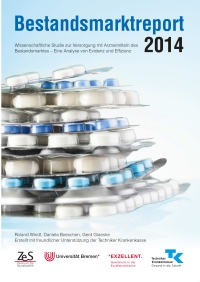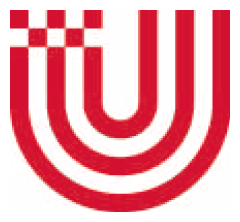 Bestandsmarktreport 2014
Bestandsmarktreport 2014Since 2011, the Pharmaceuticals Market Reorganization Act (AMNOG) stipulates an early assessment for newly approved drugs if they are to be prescribed within the statutory health insurance (SHI). This cost-benefit assessment has consequences for the drug prices in the SHI Pharmaceuticals Market. The original intention was to subject important and often prescribed pharmaceuticals of the existing drug market to an AMNOG efficiency rating as well. This law, however, was changed on April 1, 2014, the examination of the already registered drugs was abolished. Medicines, which, compared to proven and affordable treatment alternatives, do not have recognized additional benefits, continue to cause unnecessary costs for the SHI in the billions.
The Centre for Social Policy Research (ZeS) has continued the review process for certain drug groups with the kind support of the TK, a German health insurance fund. The German Federal Joint Committee, the G-BA, had commenced this process before the abolition of the law with a few medicines of the existing pharmaceuticals market.
The market development of selected drug groups was illustrated by routine data of the TK health insurance fund. The focuses of the review are new oral anticoagulants, newer antidiabetic drugs (GLP-1 agonists and DPP-4 inhibitors) and drugs for the treatment of rheumatoid arthritis.
The evaluated 17 drugs were assessed on the basis of a literature review in relation to their patient-oriented additional advantage, compared to established drug therapy options. None of the drugs was evaluated positively in the overall assessment. For example, none of the six studied antidiabetic obtained an additional asset. Of the products still in the market (two antidiabetic agents were withdrawn from the market because the manufacturers could not implement their price expectations) only two (still more expensive than comparative therapies or agents of first choice) were cheaper in relation to drugs from the same drug class.
Overall, our results highlighted the need for the AMNOG rating of the existing pharmaceuticals market to improve the efficiency of the drug supply. The results of this report will therefore be placed at the disposal of prescribing physicians.
Download: Bestandsmarktreport 2014, in German
Contact:
Prof. Dr. Gerd Glaeske (verstorben)
Dipl.-Soz. Friederike Höfel











